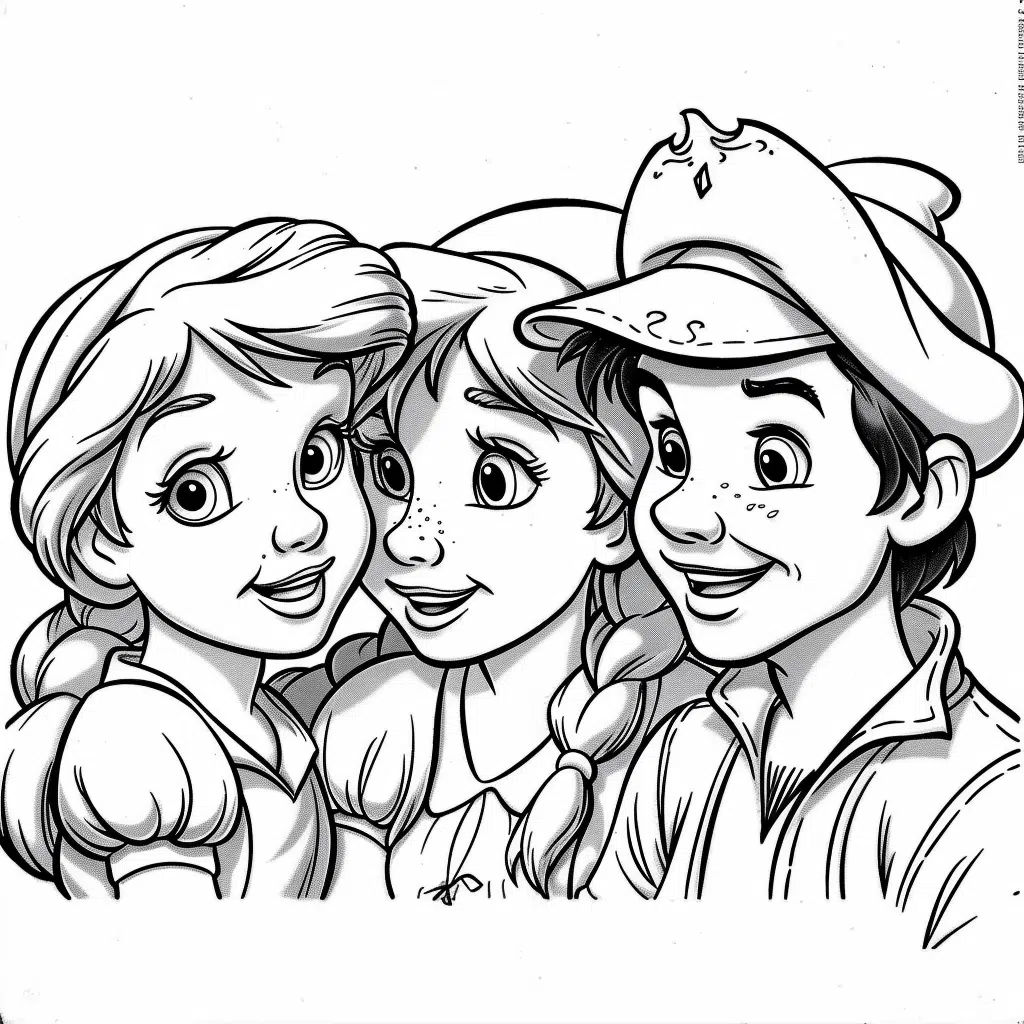In the bustling world of entrepreneurship, understanding human behavior isn’t just a skill – it’s a superpower. So, buckle up, savvy business minds, because we’re taking a deep dive into the realm of modeling psychology. This isn’t just some highfalutin concept; it’s the very fabric of learning and influence that can turbocharge personal and professional growth.
Understanding the Core Principles of Modeling Psychology
When we talk about the bedrock of modeling psychology, we’re wading into the territory of some pretty heavyweight theories. Social Learning Theory, anyone? Albert Bandura, the mastermind behind it, revealed how we are not simply products of our environment but actively shape our world through observation and imitation.
Psychological mechanics are humming away when we model behaviors and attitudes. Consider it like a mental blueprint we whip out when deciding how to navigate social norms or pick up a new skill. Now, knock on the noggin’, and it’s clear that not all imitation is created equal. There’s the ‘monkey see, monkey do’ variety – automatic mimicry – and then there’s the more conscious route – deliberate emulation. Both are essential cogs in the wheel of modeling psychology.
The Dynamics of Modeling Psychology in Real-World Applications
Think of educational settings as the ideal playing field for modeling psychology. Teachers don’t just spit out facts; they model intellectual curiosity, perseverance, and critical thinking. It’s like they’re saying, “tag, you’re it” – inviting students to mirror those high-level cognitive shenanigans.
In the corporate jungle, modeling psychology isn’t just about copying the boss’s killer handshake. It’s about the interplay of organizational behaviors that shape a company’s culture. And just when you thought it couldn’t get more 21st century, in swaggers the digital age. Social media influencers are the new-age pied pipers, with followers hanging on their every post, tweet, or story. It’s psychological modeling, with a Wi-Fi connection.
| Aspect | Details |
| Definition | Modeling is a form of learning that occurs through observation and imitation of others’ behavior. |
| Key Proponent | Albert Bandura |
| Fundamental Theory | Social Learning Theory |
| Steps in Modeling Process | 1. Attention – noticing the behavior 2. Retention – remembering the behavior 3. Reproduction – ability to replicate the behavior 4. Motivation – having a reason to adopt the behavior |
| Cognitive Factors | Involvement of mirror neurons; cognitive processes such as attention, perception, and decision-making |
| Examples of Application | Child development, therapeutic settings (e.g., cognitive behavioral therapy), workplace training, learning social behaviors |
| Historical Experiment | Bobo Doll Experiment (1961), which demonstrated observational learning in children |
| Importance in Therapy | Clients learn by observing the therapeutic demonstration of desired behaviors without direct reinforcement |
| Behavioral Modeling in Media | Imitating characters seen in media, which influences behavior, knowledge, attitudes, and values |
| Modelling in Economy | Credit card companies model consumer behavior to predict purchasing patterns and risk of repayment issues |
| Advantages | – Facilitates learning without direct experience – Can be positive for workplace dynamics and family relationships – Encourages adoption of new skills and behaviors in various contexts |
| Considerations | – Not all observed behaviors are beneficial or should be imitated – Requires the presence of model individuals or scenarios for observational learning |
| Relevance to Mindset Change | Purposefully altering behavior to achieve personal goals and improve mindset through role models or scenarios |
| Related Techniques | Behavioral modeling in cognitive behavior therapy and behavior therapy |
The Impact of Modeling on Personal Behavior Change
Ever tried to kick a habit? Modeling psychology is like the coach in your corner, providing strategies for altering the ol’ routines through positive examples. And no, it’s not just about gnawing on celery sticks instead of donuts. It’s the whole enchilada – from health improvement to addiction recovery. Therapists are tapping into this, leading by example, literally, like when they demonstrate assertive behavior by returning faulty goods with a client in tow. It’s real-world action, making a beeline into therapeutic toolboxes.
Modeling Psychology in the Crucible of Child Development
Let’s shine a spotlight on the little tykes. For them, modeling is as vital as the ‘please’ and ‘thank you’ drilled into them. It lays down the tracks for social skills, a sturdy sense of self, and the ability to juggle those big, pesky emotions. And who are the conductors of this developmental train? Parents and caregivers, who are broadcasting behaviors 24/7, whether they realize it or not.
Technological Advances and the Future of Modeling Psychology
Talking tech, modeling psychology is hitching a ride on the AI and robotics express. These cutting-edge pioneers are not just reshaping industrial landscapes but also recalibrating how we comprehend and engage in behavioral modeling. Virtual and augmented realities? They’re not mere gaming gimmicks but laboratories for psychological exploration. Imagine donning a VR headset to practice public speaking or to conquer fears – it’s not sci-fi, it’s the emerging reality.
Ethical Considerations and the Role of Modeling Psychology
Now, let’s not gloss over the ethical tightrope here. When modeling is wielded to tweak behavior, the question of moral responsibility crashes the party. It’s a hot potato, especially when talking about public figures and self-help maestros who serve up daily doses of inspiration and influence. Their actions ripple through the pond of public consciousness – but should they be more mindful of the waves they create?
Beyond the Mirror: Innovative Perspectives in Modeling Psychology
Switching gears, the scholarly folks are stirring the pot with debates on the limits of modeling psychology. It’s not just about observation from the stands; it’s also about getting down on the field and interacting. Engagement, baby – that’s where the sparks of real learning fly.
Unveiling the Subconscious: Modeling Unintentional Behaviors
Ever done something without realizing you were copying someone else? It happens more than we think, like echoes in the subconscious. Research is peeling back the layers on how these unintentional behaviors are modeled, adding another dimension to the psychological backdrop of our social tango.
Charting the Path of Influence: Networks in Modeling Psychology
Now, picture the grand tapestry of social networks, each thread a potential pathway for modeling. Studies are mapping out how connections within our communities serve as channels for influence. Ever notice how you start to sound like your squad, seamlessly snagging their slang? That’s the network effect in action, my friends.
Crafting the Self: How Modeling Psychology Shapes Identity
Modeling psychology and identity are like peanut butter and jam – different flavors that blend deliciously. The behaviors and attitudes we observe and emulate are the chisels and hammers sculpting our identities. Look to role models, and you’ll often see a mirror reflecting bits and pieces of who we are and who we aspire to become.
Synthesizing Novel Insights from the Mosaic of Modeling Psychology
Taking a step back, let’s cobble together the kaleidoscope of insights from across the research spectrum. Modeling psychology is a complex beast, but piecing together its facets offers a clearer picture of its influence and potential. Looking forward, we can only speculate about the revolutionary ways it could morph and adapt to human progress.
Hey readers, before we wrap this up, let’s sink our teeth into some nuggets hidden in the vast expanse of the internet. When talking about modeling, have you ever encountered celebs dishing out bite-sized wisdom that sticks like gum on a hot sidewalk? Here’s your chance to dive deeper with “instapundit” (Motionpicturemagazine.com/instapundit/).
Or if you’re grooving to the subtle art of fine-tuning your presence, understanding the nuances of nonverbal cues is as essential as evading “trap botox” (Myfitmagazine.com/trap-botox/). Get a grip on how to breeze through social scenarios without your expressions looking as frozen as a popsicle.
For you tech-savvy influencers, or those monitoring market trends, sometimes it’s the nitty-gritty like “how to record a phone call on iphone” (Reactormagazine.com/how-to-record-a-phone-call-on-iphone/) that can have a butterfly effect on your success metrics.
Entrepreneurial aesthetics count for something too, folks. Whether you need a quick trim or a full-on image overhaul before that venture capital pitch, finding “supercuts near me” (Reactormagazine.com/supercuts-near-me/) might be the game-changer.
And in the nuanced web of human experiences, the unique journeys of “women” in entrepreneurship (Reactormagazine.com/women/) can teach us a ton about resilience, ingenuity, and the power of modeling psychology in paving new paths.
Remember, whether you’re in the market for motivation or the grind for growth, the psyche plays a lead role. So keep an eye on those around you; the ones you admire, the ones you emulate because, in the end, we’re all in the business of modeling this complex journey called life.
The Mind’s Mirror: Fun Facts in Modeling Psychology
Who’s Copying Who?
Hey, ever wondered why you just can’t resist the urge to yawn when someone else does? Or why that new dance move went viral? It’s all thanks to something called modeling in psychology. This isn’t about strutting down a catwalk; it’s about how we humans are wired to learn behaviors by observing others.
The Celebrity Effect
Picture this: Your favorite celebrity starts wearing oversized sunglasses, and suddenly, you’re scouring the mall for the biggest pair you can find. Sound familiar? It turns out, when we watch someone we admire doing something, our brain says, “Hey, that looks cool, let’s do that too!” It’s no shocker that brands are clambering to get celebrities to sport their goods – we can’t help but want to mimic the stars!
Monkey See, Monkey Do… Literally!
Get this – the whole concept of modeling isn’t just a human gig. In fact, those clever scientists discovered these things called mirror neurons and it turns out, even monkeys have them. These neurons light up both when the monkey does something and when it watches another monkey doing the same thing. It’s like the brain is rehearsing the action without moving a muscle!
We’ve Got Models in Our Heads!
Nah, not those runway models. Think of them as mental playbooks. We use these “internal models” to predict outcomes based on what we’ve seen before. For instance, if you’ve ever seen someone burn their hand on a hot stove, your brain probably went, “Note to self: don’t touch the red-hot stove.” Sound advice, right?
A Spot of Bad Behavior Brewing
It’s not all fun and games, though. Ever seen a kiddo throw a tantrum and then their little sibling starts wailing too? That’s modeling psychology showing its cheeky side. Kids are especially prone to picking up behaviors like sponges – the good, the bad, and the tantrum-y.
Change Your Ways, Change Your Mind
Now for the real kicker: Did you know you can change your own noggin by acting out new behaviors? That’s right. By deliberately practicing new actions, you’re helping your brain get the hang of it, essentially rewiring your thought patterns. It’s like giving your brain a software update!
Take It From the Top
Modeling psychology is a game changer, not just for how we understand human behavior, but also for therapy and personal development. By recognizing how this mimicry can shape our actions, we can use it to our advantage – just imagine rewiring habits or boosting learning processes.
So, next time you catch yourself copying someone’s outfit or their coffee order, just remember, it’s all part of the grand scheme of modeling psychology. Who knew our brains were such copycats?
























